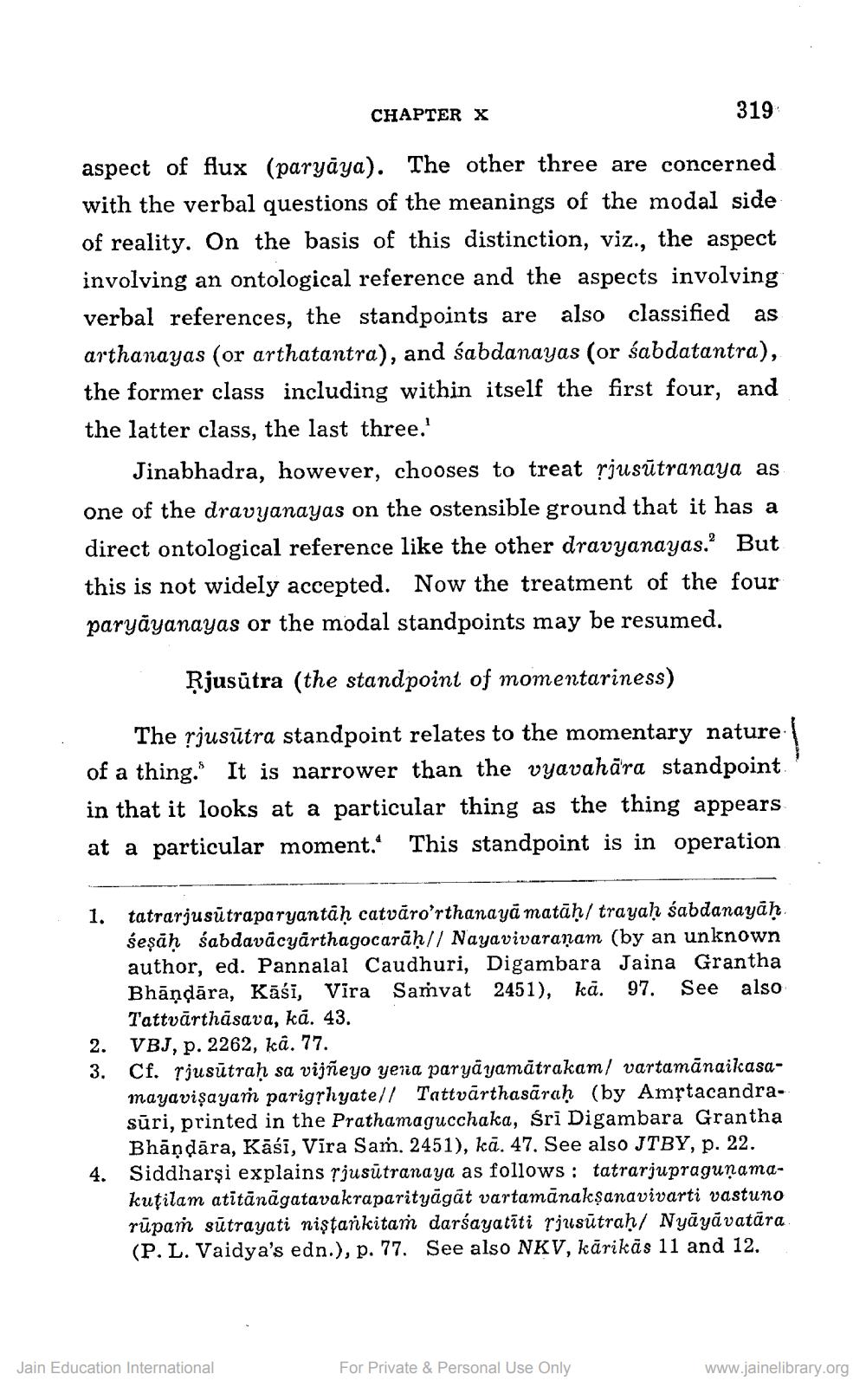________________
CHAPTER X
319
aspect of flux (paryāya). The other three are concerned with the verbal questions of the meanings of the modal side of reality. On the basis of this distinction, viz., the aspect involving an ontological reference and the aspects involving verbal references, the standpoints are also classified as arthanayas (or arthatantra), and sabdanayas (or śabdatantra), the former class including within itself the first four, and the latter class, the last three.'
Jinabhadra, however, chooses to treat ļjusūtranaya as one of the dravyanayas on the ostensible ground that it has a direct ontological reference like the other dravyanayas. But this is not widely accepted. Now the treatment of the four paryāyanayas or the modal standpoints may be resumed.
Řjusūtra (the standpoint of momentariness)
The sjusūtra standpoint relates to the momentary nature of a thing. It is narrower than the vyavahāra standpoint in that it looks at a particular thing as the thing appears at a particular moment. This standpoint is in operation
1. tatrarjusūtraparyantāḥ catváro’rthanayā matāḥ| trayah sabdanayāḥ
seşāḥ śabdavācyārthagocarāḥ// Nayavivaranam (by an unknown author, ed. Pannalal Caudhuri, Digambara Jaina Grantha Bhāņdāra, Kāśi, Vira Samyat 2451), kā. 97. See also
Tattvārthasava, kā. 43. 2. VBJ, p. 2262, kâ. 77. 3. Cf. rjusūtraḥ sa vijñeyo yena paryāyamatrakam) vartamānailcasa
mayavişayam parigshyatell Tattvārthasāraḥ (by Amrtacandrasūri, printed in the Prathamagucchaka, śri Digambara Grantha Bhāndāra, Kāśi, Vira Sam. 2451), kā. 47. See also JTBY, p. 22. Siddharşi explains rjusūtranaya as follows: tatrarjupragunamakuţilam atitānāgatavakraparityāgāt vartamānaksanavivarti vastuno rūpam sūtrayati niştankitam darśayatīti rjusūtrah/ Nyāyāvatāra (P. L. Vaidya's edn.), p. 77. See also NKV, kārikās 11 and 12.
Jain Education International
For Private & Personal Use Only
www.jainelibrary.org




